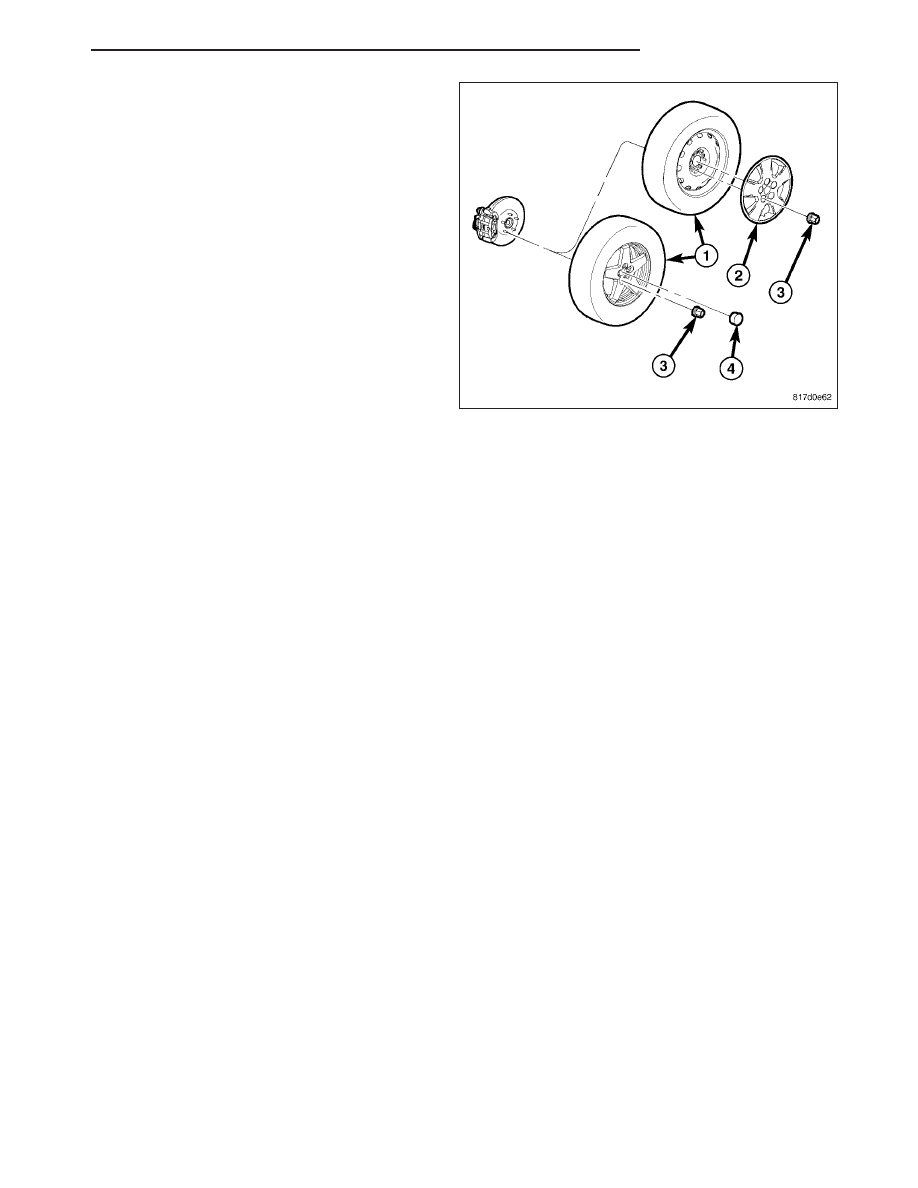Dodge Caliber. Manual - part 84

11. Install the tire and wheel assembly (1) (Refer to
22 - TIRES/WHEELS - INSTALLATION). Install
and tighten wheel mounting nuts (3) to 135 N·m
(100 ft. lbs.).
12. After adjusting both rear drum brakes as neces-
sary, lower the vehicle.
13. Apply and release the parking brake lever one time after the adjustment process is completed checking parking
brake operation.
14. Road test the vehicle stopping in both forward and reverse directions. The automatic-adjuster will continue to
adjust the brakes as necessary during the road test.
PM
BRAKES - BASE
5 - 37